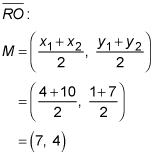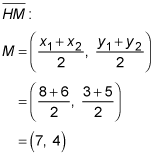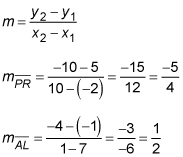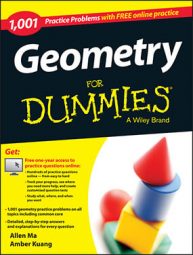Coordinate geometry proofs require an understanding of the properties of shapes such as triangles, quadrilaterals, and other polygons. The following practice questions ask you to apply the midpoint and slope formulas to prove different facts about two different quadrilaterals.
Practice questions
The points R (4, 1), H (8, 3), O (10, 7), and M (6, 5) are the vertices of a rhombus. Prove that the diagonals of a rhombus bisect each other.
The points P (–2, 5), A (7, –1), R (10, –10), and L (1, –4) are vertices of a parallelogram. Show that the diagonals of a parallelogram are not perpendicular to each other.
Answers and explanations
The midpoints of the diagonals are both (7, 4).
When two line segments bisect each other, they share a common midpoint. Use the midpoint formula to find the midpoint of diagonal

Use the midpoint formula to find the midpoint of diagonal

Because the two segments share the same midpoint, they bisect each other.
The slopes of the diagonals are –5/4 and 1/2, which are not negative reciprocals.
Lines that are perpendicular have slopes that are negative reciprocals of each other. Use the slope formula:

The slopes of the lines aren't negative reciprocals of each other; therefore, the lines are not perpendicular to each other.

